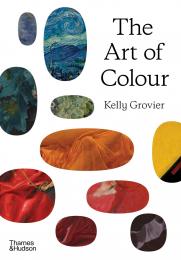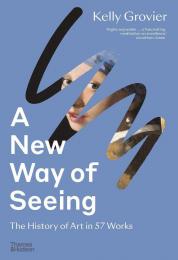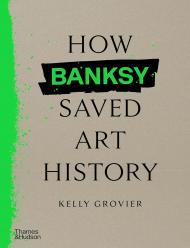Новий спосіб оцінки мистецтва, який ставить твори мистецтва на перший план і в центр, представлений нам одним із найсвіжіших і найзахопливіших голосів культурної критики
Що робить велике мистецтво великим? Чому деякі твори пульсують в уяві покоління за поколінням, століття за століттям? Від «Народження Венери» Боттічеллі до «Герніки» Пікассо деякі картини та скульптури стали настільки відомими, настільки частиною того, хто ми є, що ми більше не дивимося на них. Ми сприймаємо їх велич як належне; наші очі майже застаріли. Нам потрібен новий спосіб бачення.
Не задовольняючись традиційними інтерпретаціями шедеврів, які так часто зацікавлені лише в тому, щоб дізнатися про мистецтво, а не з нього, Келлі Гров’єр прочесала поверхню шанованих творів від Теракотової армії до автопортретів Фріди Кало, щоб знайти ключ до їхньої тривалої сили зворушувати та захоплювати нас. Він виявив, що в кожній справді великій роботі є якась недооцінена деталь, яка запалює її з глибини душі.
Відійшовши від біографії, стилю та хронології «ізмів», якими займається більша частина історії мистецтва, Гров’є розповідає нову історію, у якій ми навчаємося з творів мистецтва, а не лише про них.
Список вмісту:
Introduction: A Touch of Strangeness
Ашшурбаніпал полює на левів (бл. 645–635 рр. до н. е.)
Скульптури Парфенона (бл. 444 р. до н. е.)
Теракотова армія Першого імператора Цинь (бл. 210 р. до н. е.)
Фрески «Вілла містерій» (бл. 60–50 рр. до н. е.)
Лаокоон і його сини (бл. 27 р. до н. е.–68 р. н. е.)
Колона Траяна (113 р. н. е.), Аполлодор Дамаський
Келлська книга (бл. 800 р. н. е.)
Мандрівники серед гір і струмків (бл. 1000 р.), Фан Куан
Гобелен Байо (бл. 1077 або пізніше)
Універсальна людина (бл. 1165), Хільдегарда Бінгенська
Вигнання з райського саду (бл. 1427), Мазаччо
Гентський вівтар (1430–1432), Ян ван Ейк
Зняття з хреста (1430–32), Рогір ван дер Вейден
Благовіщення (бл. 1438–1447), Фра Анджеліко
«Оплакування мертвого Христа» (бл. 1480), Андреа Мантенья
Народження Венери (бл. 1482–1485), Сандро Боттічеллі
Мона Ліза (бл. 1503–1506), Леонардо да Вінчі
Сад земних насолод (1505–1510), Ієронім Босх
Фрески стелі Сикстинської капели (1508–12), Мікеланджело
Афінська школа (1510–11), Рафаель
Ізенхаймський вівтар (1512–16), Матіас Грюневальд
Вакх і Аріадна (1520–23), Тиціан
Автопортрет (1548), Катаріна ван Хемессен
Розп'яття (1565–87), Тінторетто
Вечеря в Еммаусі (1601), Караваджо
Екстаз святої Терези (1647–52), Джан Лоренцо Берніні
«Меніни» (1656), Дієго Веласкес
Дівчина з перловою сережкою (бл. 1665), Йоганн Вермеер
Автопортрет із двома колами (бл. 1665–69), Рембрандт ван Рейн
Експеримент з птахом у повітряному насосі (1768), Джозеф Райт з Дербі
Кошмар (1781), Генрі Фюзелі
Третє травня 1808 (1814), Франсіско Гойя
The Hay Wain (1821), Джон Констебл
Дощ, пара і швидкість - The Great Western Railway (1844), Дж. М. В. Тернер
Аранжування в сірому та чорному № 1 (Портрет матері художника) (1871), Джеймс Ебботт
Макніл Вістлер
Мислитель (1880–1904), Огюст Роден
Бар у Фолі-Бержер (1882), Едуард Мане
Купальщики в Аньєрі (1884), Жорж Сера
Крик (1893), Едвард Мунк
Великі купальниці (1900–1906), Поль Сезанн
Група IV, № 7, Зрілість (1907), Хільма аф Клінт
Поцілунок (1907), Густав Клімт
Танець (1909–1910), Анрі Матісс
Водяні лілії (1914–26), Клод Моне
Фонтан (1917), Марсель Дюшан
Американська готика (1930), Грант Вуд
Стійкість пам'яті (1931), Сальвадор Далі
Герніка (1937), Пабло Пікассо
L’Égypte de Mlle Cléo de Mérode: cours élémentaire d’histoire naturelle (1940), Джозеф Корнелл
Автопортрет із терновим намистом і колібрі (1940), Фріда Кало
Один: Номер 31 (1950), Джексон Поллок
Етюд за «Портретом Папи Інокентія Х» Веласкеса (1953), Френсіс Бекон
Коробки Brillo (1964), Енді Уорхол
Назад і наперед (1981), Шон Скаллі
Бетті (1988), Герхард Ріхтер
Маман (1999), Луїза Буржуа
Художник присутній (2010), Марина Абрамович
Джерела та додаткова література
Подяки
Автори фото
Індекс
Про автора:
Келлі Гров’є є автором статей для BBC Culture і автором кількох відомих досліджень мистецтва, зокрема 100 Works of Art That Will Define Our Age, Art Since 1989 та On the Line, усі опубліковані Thames & Hudson. Його твори публікувалися в Times Literary Supplement, The Independent, Sunday Times, Observer, RA Magazine та Wired. Його історія лондонської в’язниці Ньюгейт, The Gaol, була «Книгою тижня» BBC Radio 4. Він є співзасновником наукового журналу European Romantic Review.



